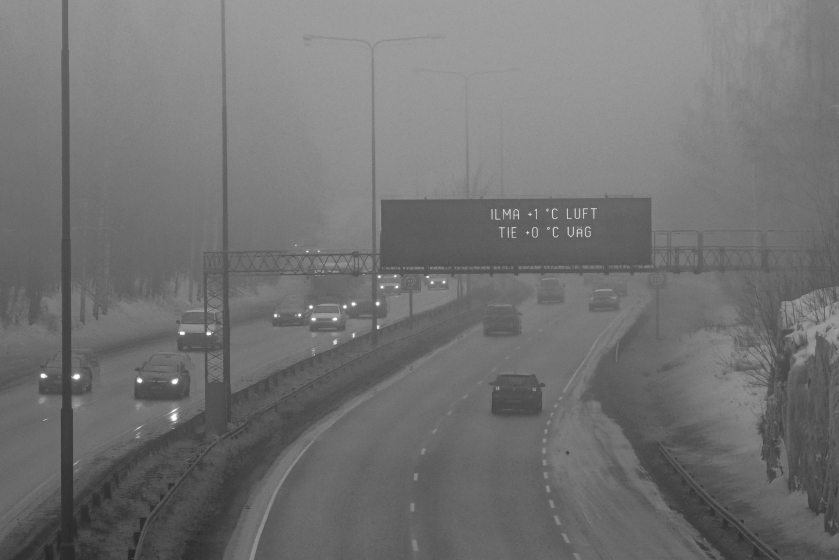Winter speed limits take effect in Finland

A new study from the VTT Technical Research Centre of Finland shows that Finland’s policy of enforcing lower speed limits during the dark winter months reduces the number of traffic accidents.
Statistics indicate that some 36 accidents leading to personal injuries are avoided each year, as are eight deaths.
Most countries do not change their speed limits for the colder months. In Finland, however, the combination of snow, ice and very dark conditions forces a lower speed limit during the winter. As of Friday, motorway speed limits will drop to 100 kilometres per hour, while other major roads will see an 80 kilometre per hour limit enforced. Both are a 20 kilometre per hour decrease compared to summer limits.
In some 80 kilometre per hour areas with large amounts of heavy traffic and roadside dwellings, the speed limit will be lowered to 70 kilometres per hour.
Those motorway sections with a variable speed limit that allows them to adjust the limit to suit weather and road conditions have a maximum 100 kilometres per hour speed limit from the start of November to the end of February. The speed limit reverts back to 120 kilometres an hour on these roads in early March, if the weather and road conditions cooperate.
According to Finnish law, vehicle owners must also fit winter tyres to their vehicles by the first of December and keep them in use until the end of February. Studded tyres can be fitted already as of November 1.
Lower speeds save lives
A new study from the VTT Technical Research Centre of Finland shows that Finland’s policy of enforcing lower speed limits during the dark winter months reduces the number of traffic accidents. Statistics indicate that some 36 accidents leading to personal injuries are avoided each year, as are eight deaths.
“A reduction in speed allows more time to react in unexpected situations and shortens the stopping distance when an elk appears on the road, for instance,” says Tuomas Österman, a traffic control expert at the Finnish Transport Agency.
Even so, in some situations, the reduced winter speed limits may not be enough. Österman advises motorists to adjust their driving speed according to weather conditions.
“During a snow storm, for example, visibility and driving conditions may deteriorate to the point that it becomes necessary to lower your driving speed to far below the appointed limit,” he says.
Lower winter speed rates also reduce the amount of fine particles released in the air from traffic and slow the wear on road surfaces, particularly when studded tyres are in use. Depending on the weather, officials usually change the winter speed limits back to the higher summer limits sometime in late March-early April.
Related stories from around the North:
Canada: Driving on the ice road in Canada’s Northwest Territories (Video), Eye on the Arctic
Finland: Radical road tax changes proposed, Yle News
Norway: Cheaper ruble boosts Norway-Russia petrol traffic, Barents Observer
Russia: Traffic over Finnish-Russian border drops by one third, Yle News
Sweden: Report says cars guzzle more gas than claimed, Radio Sweden
United States: High temperatures sink vehicles traveling ice roads in Western Alaska, Alaska Dispatch News



